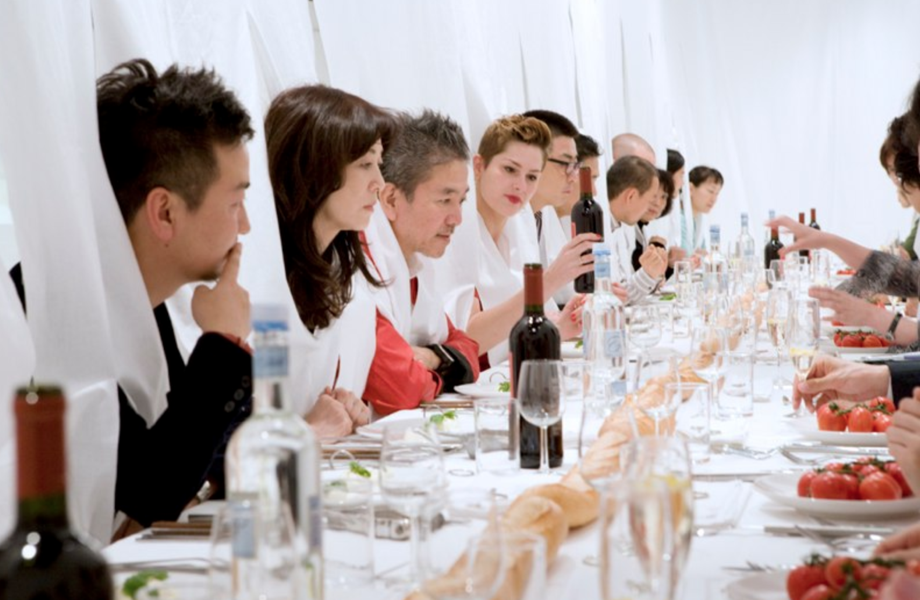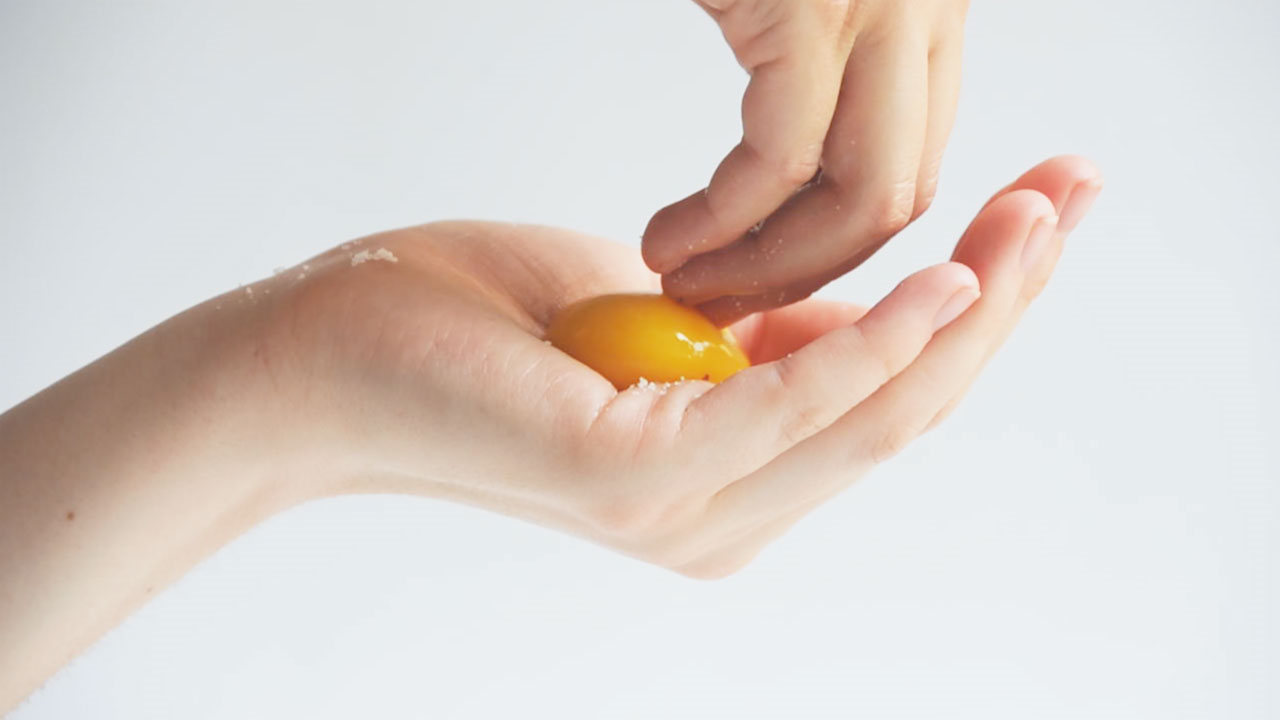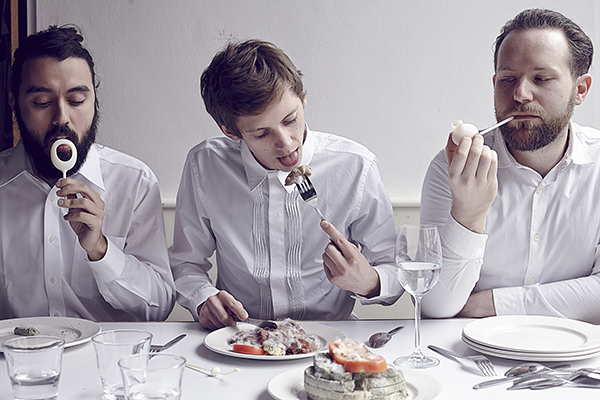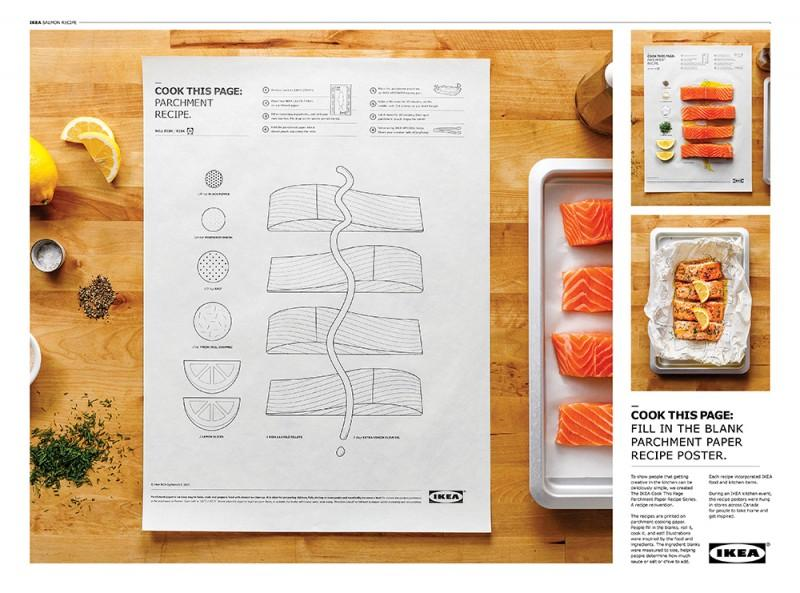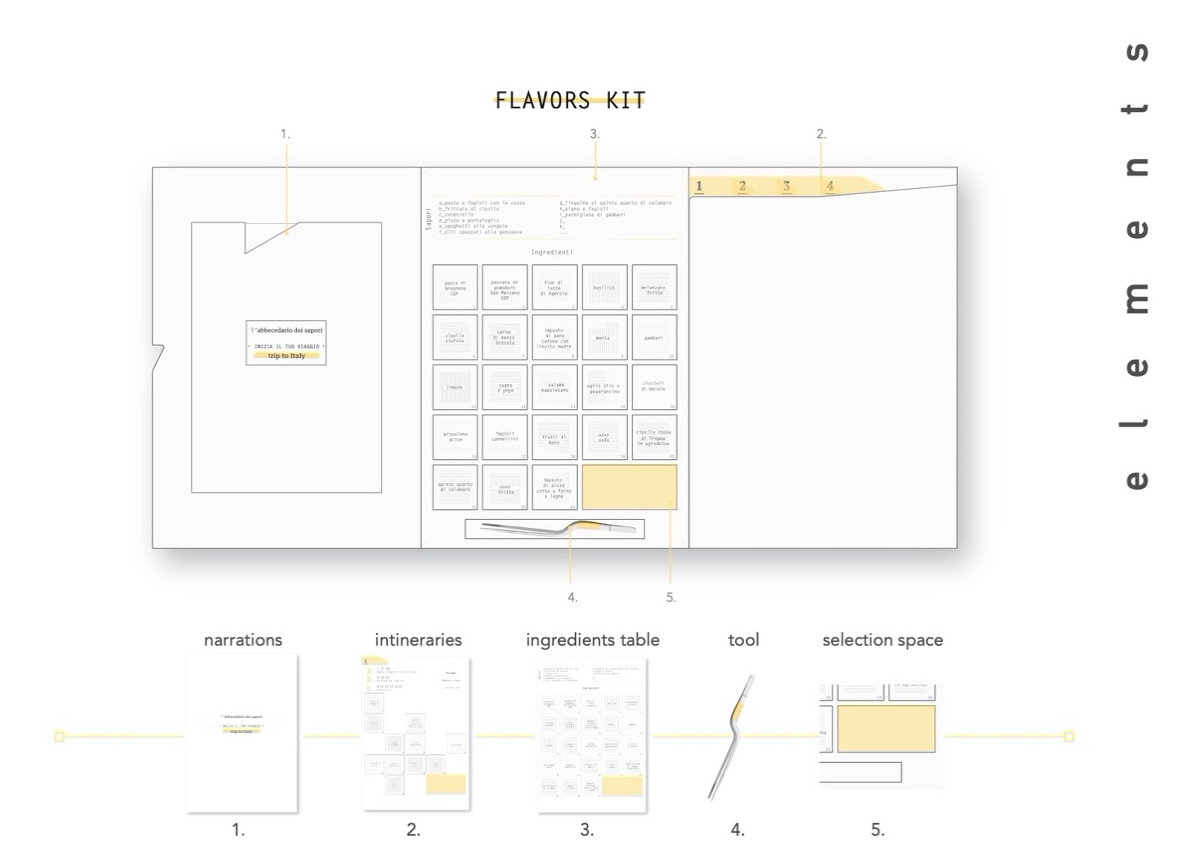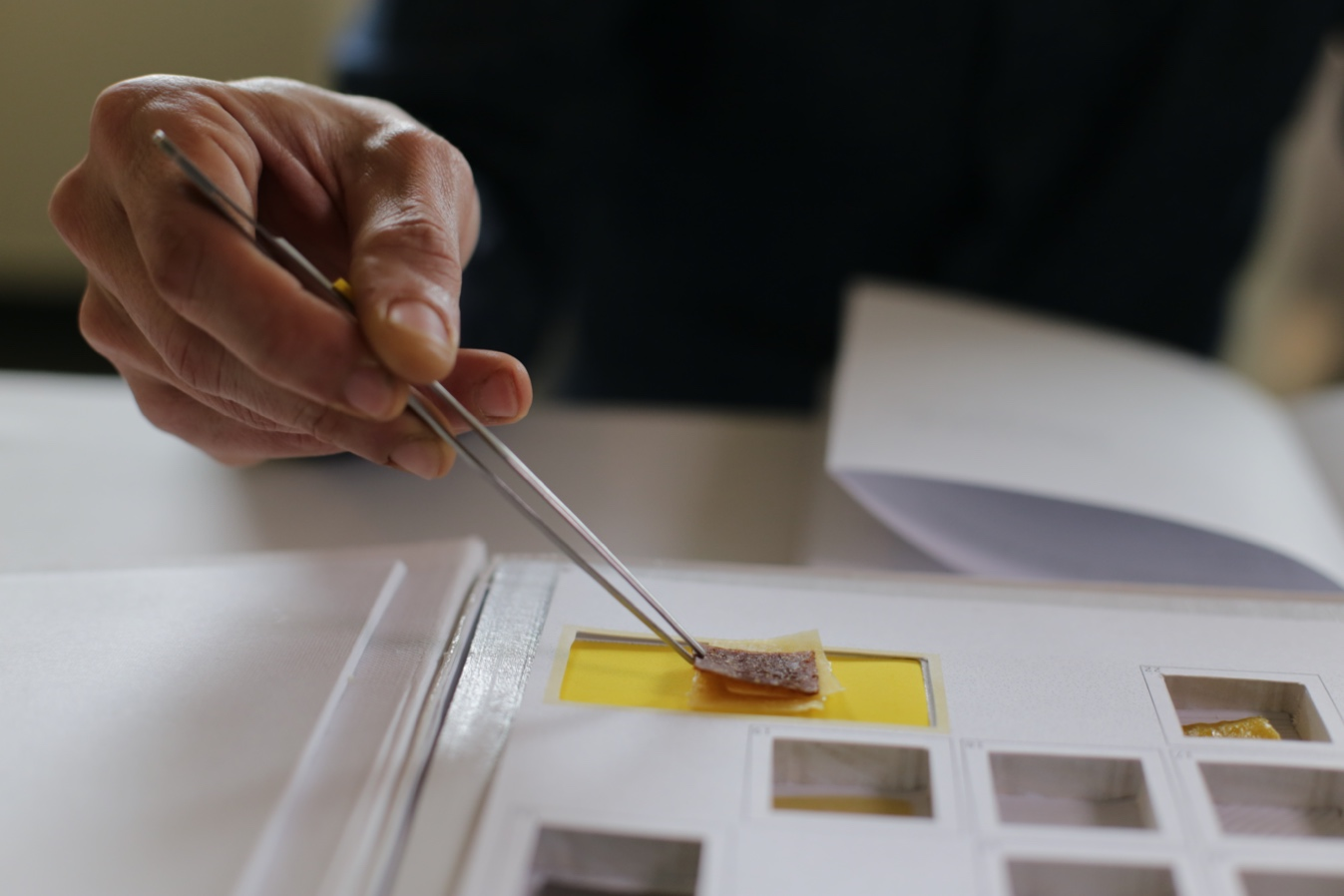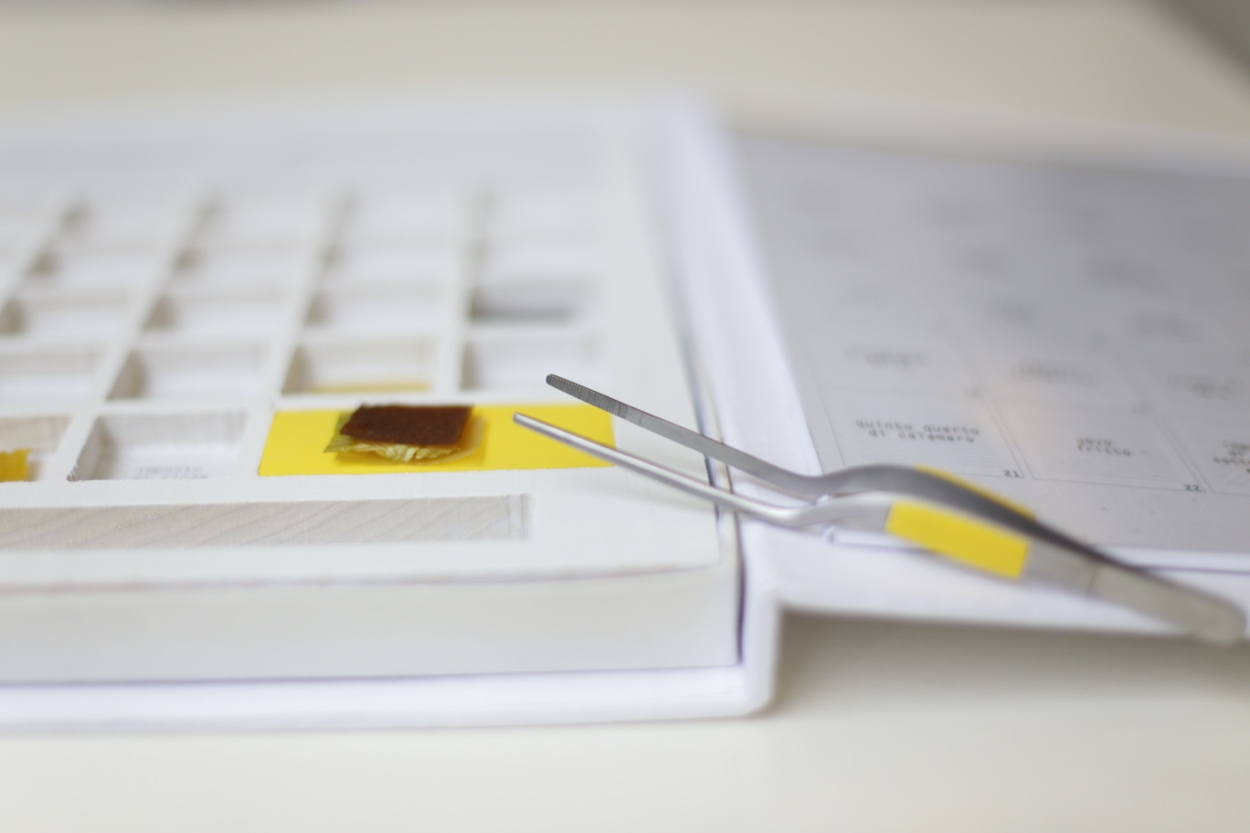1. Introduction
Transformations and innovations related to food production, the evolution of consumption and behaviour, the political, economic and social phenomena that impact eating habits and the relational and symbolic value attributed to food have contributed to expanding the design perspective, which looked into the theme of food in a multidisciplinary way.
The connection between the design and food has evolved and enriched themes that go beyond the need to feed and, therefore, transform, cook, and eat meals by attributing to the food aesthetic and formal values, but also critical and speculative. (Finessi, 2013)
The paradigm change that occurred in the last two decades has led to considering food as an object (Giuxè, 2020), focused on observing the changes in convivial habits, has spawned new project fields and new alliances between skills, disciplines and community.
The design has tested strategies, new products and materials, and sharing practices and the inclusion of the community in the food production and transformation and the interpretation of the idea of hospitality linked to conviviality. The project orientation on the theme has looked at the realization of production practices, processes, and tools for food consumption until “manifesto” products to raise awareness of environmental, ethical and social sustainability. The behaviour related to cookery and consumption, transformations of inhabiting the space depending on activities that take place in it, the digitalization of information related to food preparation, the experimentation on foods, the hybridization of technologies for cooking are some of the topics that affect the scientific debate in recent years, and many are the projects and exhibitions that explore this theme. If on one side the project has to deal with features concerning shapes, functional properties, technological systems of transformation, production management, communicative and delivery systems, on the other, the aesthetic and symbolic dimension associated with the collective scenario and the narrative nature of food, are flanked by the productive and consumption one (Bassi, 2005).
The designer considerations concern the food intended as a bond with nature which allows establishing a physical, aesthetics and experiential complicity between individual and matter and creating a distance relationship with the idea of “natural”, as claimed by Domitilla Dardi, curator of the exhibition “CasaMondo” that collects critical thoughts on current social manifestations and events related to eating.
Food is also a place, open or protects, in which are created relations between people involved in conviviality moments who share a social and community experience. “The food is one of the few real things left, that interact with the body and it works as an accessory of self-assessment and empowerment. The food will become the object more designed, desired and meaningful of our society” (Guixé, as cited in Dardi, 2021).
Food is a speculative expression used to understand the context or denounce critically the present or the future behaviours. There are many examples of designers that interpret the project as a manifesto, where objects and their relations with the world give shape to ideas and new narrations and, at the same time, animate critical and interpretative observations.
In 2010 at the Saint Etienne Design Biennal in France, the project “Between Reality and the Impossible” from Dunne & Raby defined a new perspective on the question of how we will feed a world of 9 billion people by 2050. They analyzed the gap between reality and the impossible, which makes it possible for designers to question the orthodoxy of design and the prevailing views in technology so that new perspectives may emerge (Sommariva, 2010).
“The Foragers” project use synthetic biology to create “microbial stomach bacteria”, along with electronic and mechanical devices to maximize the nutritional value of the urban environment, making up for any shortcomings in the increasingly limited diet available commercially (Dunne & Raby, 2009, p. 135).
More recently, the subversive project "Digital Dark Food" of Guixé, presented at the exhibition Food Revolution 5.0 at KGM of Hamburg in 2017 complains about the abuse of technology in food. The designer creates edible elements whose effects, inoffensive and temporary, provoke bodily experiences such as hunger, fullness, nausea, hiccups, illness, diarrhoea, indigestion, flatulence, acid, headaches, allergies, itchiness, sweat, tremors and cramps to compensate for the separation of mind and body generated by the so-called “Perfect food”, in which the nutritional qualities are created by an algorithm.
In the transformative appetite project, the MIT Media Lab realised an innovative dining experience, enhancing the interactivity between food and cooking conditions, and between food and users is created. “The new concept that transforms 2D edible films into 3D shapes by anisotropic swelling through cooking. Based on simulation using finite element analysis, a simplified geometry expansion model was built into a user interface, allowing users to create various design shapes, simulate transformation and fabricate transformable dishes.” (Wang et al., 2017)
Food takes a functional character associated with production, sales and consumption aspects, and relational, evocative, symbolic and narrative by generating experience during the cooking and tasting, in which the end-user is involved in constant and surprising interaction with food. (Comber et al., 2012)
The project actions concern the observation of the real, the connection between the human being and the food that affects relations, on social organizations and in general on the relationship with the environment; as Attali claims the food has an essential value for the development of a culture and its evolution (Attali, 2020).
2. Dining experience
Over time, the word 'experience' was defined and used in several fields from marketing to design to enrich goods and services with perception and emotions until to sell it as the final product (Pine & Gilmore, 2000).
In the design field, the experience assumed value in the purchase phase involving the consumer through aspects linked to cultural, communicative, semiotic, behavioural, and psychological factors that stimulate senses, emotions, and relationships (Rifkin, 2000).
This exploration in the food design field translates by creating dining experiences, events focusing on the user experience, the cultural context, and the aesthetic, sensory and symbolic value of the food. Following the words of Merleau-Ponty, perception takes a significant value on what we experience with food, our cognitive integration of sensations, perceptions, thoughts, and feelings (Merleau-Ponty, 2003).
Many cognitive studies related to food have shown that are many factors influencing perception: colours, textures, food aromas, tools, and perceptive stimuli that come from the environment enhance tastes and influence the dining experience (Spence & Piqueras-Fiszman, 2014).
In this context, the study on synesthesia, recognized as a perceptual phenomenon that allows the senses to cross, leads the food design project to link environment, tools, ingredients, and people perceptions (Cytowic, 2002; 2009). Mainly, researches on synesthesia of the Crossmodal Perception group at the University of Oxford raises questions about how the brain combines information from different stimuli like smells and tastes with the possibility to confuse and deceive senses perception.
The outcome is an experience, synthesis of a design intention that involves the end-user and includes stimulus that activates the sensation and the taste experience through auditory, olfactory, visual and tactile stimulation (Riccò, 2008).
It prefigures a “new science of eating”, in which the human perception and mealtime are affected by a series of external factors such as values and a multisensorial approach to tasting (Spence, 2017).
This multi-sensorial approach to the design of culinary artefacts, in recent years, has led to the definition of new moments of conviviality, exploring the various relationships that are established between consumer and food, reinterpreting the processing, presentation and tasting of the food (Marconi et al., 2007).
The taste experience became a social product that focuses on how people design their food habits, behaviour, and rituals, recognizing and exploring new interactions. The food turns into means to develop a dining experience, intended as a live performance or a narrative element, to sensitize and orient the way to interact with foods, enhancing or altering sensorial and perceptual aspects.
“Food itself has always been theatre, a representation of something integral yet aspirational to the way we live. Chefs and diners regularly speak about the presentation of food - the way dishes are prepared and staged to enhance the dining experience beyond the enjoyment of food.” (Mahoney, 2013)
Among the research of the evolution of dining experience is possible to distinguish the designer Marije Vogelzang’s work that focuses on design experiences based on eating and sharing food and showing where our food comes from. (Fig. 1)
Eating Design is the design of food acts and any eating situation, about changing food systems. The outcome is not necessarily the material of food; it can also design new rituals, systems or services, where people interact with food. Eating design covers a large field connected to science, psychology, nature, culture and society (Vogelzang, 2009).
Through performances, experiences, exhibitions, and objects, it designs dining experiences to explore interactions with people, ingredients, hands, mouths and stomachs. In this context, “designers can help people to change their perception of food” and understand the alternative value of food as a medium for positive change to build a healthy future (Vogelzang, 2017).
The will to “rewrite the identities and expand human connection with senses” is expressed in the dining experience “Contatto” designed by Giulia Soldati, which proposes a new approach to the materiality of food. Creating a new relation between taste and touch allows rethinking the intimate act of gesture, removing formal barriers created in the western world. (Fig. 2) The project promotes the return to an essential human-food relationship by using the body as a tool of tactile perception through which live the experience and experiment a new eating experience. Foods and bodies melt in a new way, in which the act of nourish and feed interact in an eating ritual composed of new gesture, labels and a new vocabulary (Soldati, 2017).
Another phenomenon to observe is what concerns the speculative design on the food theme. The environmental impacts linked to food processing, the traceability of ingredients, the life cycle assessment of foods, the reduction of waste and the equal resources distribution are all issues that inspire the change in the food sector with a perspective on sustainability.
Many ‘food futurists’ (Elder, 2020) face transformations due to the exponential growth of the world population, climate change and urbanization, by developing products and services to lead reflections, transfer messages and generate alternative solutions.
Projects like “Human Hyena”, made by the designer Paul Gong, express the speculative trend whose aim was to change food wastage by creating new bacteria’s and three different tools to modify the taste and digest food (Fig. 3). The transformers of smell and taste are released enzymes that bind to receptors and alter the perception of rotten foods like the hyena.
Gong, to describe his project, said, "I imagine trans-humanists, DIYBio enthusiasts and makers coming together to form a group known as 'Human Hyenas', who want to tackle the increasingly serious problem of food wastage, by using synthetic biology in order to solve bigger issues”.
On one hand, new technologies to cultivate foods in the laboratory give the possibility of a new life to the waste, on the other, experimentations and narrations that reconsider the connection between human, food and interaction modes highlight the symbolic-expressive dimension of the food.
The narration linked to food creates physical and metaphorical space, participative and collective events in which sharing rituals, senses and memories are stimulated to feed their imagination.
The food, in this multi-sensorial dimension, is configured “as a system of communication, a body of images, a protocol of usages, situations, and behaviour” (Barthes, 1961 [1998], p.21). From an anthropological point of view, it has the same function of the language, to which are associated elements called “gustemes”, organised as “structures of opposition and correlation” (Lévi-Strauss, 1963, p.85).
New communicative codes lead to/guide the composition of recipes and ingredient in cuisine. The food becomes a synthesis of brand promotion by representing an innovative way to connect the use of IKEA food items and its kitchen product in a home cooking experience. The typical instructions IKEA, the project “Cook this page”, represent a promotional campaign composed of a series of step-by-step indications to compose the ingredients and realize the recipes printed on cookable parchment paper, supplied to customers inside the stores. (Fig. 4)
3. Methodology - Collaborative approach
“Food Design means designing human experiences and enhancing food cultures, or better, knowing how to use sensorial and intentional affordances to design new food experiences and cultures” (Massari, as cited in Zampollo, 2016).
For a cross-disciplinary approach to research, have been involved various competencies and stakeholders during the design process, focusing on the role of experiences, desires, moods and emotions in human activities related to nutrition.
In the book, FoodMood (2010), Stefano Maffei and Barbara Parini, through a case studies selection, define four categories: food people, food experience, food products and food specials. In the category ‘food people’ they considered the approach that considers chefs as designers and “[…] their function is to design on the bases of knowledge, skills, genealogies, memories and personal experiences of the process of transformation that range from the specific to the systematic.” (Maffei & Parini, 2010, p.12)
Notably, three main stages characterize the methodological approach adopted during the project development: the first concerns the exploration of the state of the art with the construction of the reference scenario that include a part of background critical analysis; the second regards the implementation of the method and co-design practices (Sanders & Stapper, 2008) for the definition of the project experience; a third of experimentation include the testing phase by gathering feedback about the dining experience and the definition of future scenarios of application.
The first phase of case studies selection and analysis investigate the reference framework by identifying the main areas and the guidelines in which the design is linked to food, creating new research fields.
The second phase combines mixed-up roles between the designer and a starry chef to develop the project. As a 'facilitator' the designer plays an essential role in knowledge exchange, idea generation, and concept development phases (Sleeswijk Visser et al. 2005) to define a shared project. This research investigates the link between senses and behaviour to define new ways to link conviviality and food tasting.
A dialogical approach made up of meetings with the starry chef in which have been defined the possible fields of experimentation.
Then has been carried out a data collection organized into three distinct phases: definition, collection and analysis to record perceptions, memories and interest about the link between senses and mind.
The data collection, conducted through an online questionnaire, has led to the definition and the development of the aims and guidelines for the final project of the dining experience, connecting narrative and tasting aspects with territorial identities.
The final phase concerned the tasting experimentation with a sample selection of ‘tasters’ and the development of a series of sheets and evaluation diagrams to gather the level of satisfaction, the opinion regarding the association between senses and flavours generated by their memories with specific places.
4. Flavours Abecedary, a trip into taste
The design experience, “Flavours Abecedary, a trip into taste”, explores food as a tool of territorial identity and promotion, as a medium to investigate new ways of emotional involvement through memories and sensorial perceptions linked to ‘taste senses’ (Spence, 2017).
The food is interpreted as a cultural experience rooted in traditions and territorial identities, and it represents an element that allows to “connect different cultures”. “The food is suitable for mediate the relationship between the different cultural traditions opening the kitchen systems to all kind of inventions, intersections and contaminations” (Montanari, 2004, p. 153-154).
The cases described in the background have been defined as a narrative tool that generates multi-sensorial experiences, in which communicating and promoting a territory and its traditions.
The design experience results from dialogues and meetings with the starry chef Marianna Vitale of the “Sud” Restaurant in Quarto (Campania), who have been tried out a new way of tasting, exploring the connection between memories, senses, narrations and the territory. Starting from the traditions and the typical dishes, the project provides an interactive and participative experience to the end-user, combining the exploration of the taste with the identity features of a place, its traditions and products of excellence.
The project is a journey among flavours that evokes memories, feelings and places to involve all the senses. It produces a dining experience based on aesthetic, food and memory focusing on relationships between food and people based on tasting time and senses.
“Flavours Abecedary” is a user-guiding composed of culinary itineraries that take the taste perception to a higher level, using flavour’s films. A series of instruction make the kit with itineraries and combinations to start the journey among flavours. It is composed of three elements, realized by layers: ingredients table, itineraries cards and narrations. (Fig. 5)
The table of ingredients contains tastes numbered from 1 to 23 and a code used to recognize elements, composed of 4 different textures: basic elements, doughs, aromas, composed flavours.
The itinerary cards are made up of recipes to superimpose on the ingredients table to help identify the ingredients through numbers and alphabets chars and compose the flavour.
“Flavors Abecedary” is a sequence of instructions that helps you to choose the code and take a multi-sensorial journey around what you feel.
The journey starts by reading a narration of one of the four itineraries proposed; the second step consists of selecting the layer to choose films, and composing the flavour. (Fig. 6, Fig. 7).
The user can choose among four itineraries related to a country or a city through the reading of narration and the composition of flavour layers provided in the kit. The scope is to discover a territory and taste traditional dishes with a multisensorial stimulus that recalls perceptions connect to memories, flavours, colours, and smells. The dining experience realized by a flavours kit combines of four itineraries: “Remember-Feelings home” by enhancing the own tradition for those who want to feel home flavours; “Discover-Visit Naples”, to discover new places starting from the typical ingredients and dishes of a place; “Promote-Starry kitchen”, by promoting excellent restaurants; and “Experiments-Empirical combinations”, to compose new flavours combination and to tell new stories.
5. Conclusions
The issues explored by the design, on the food theme, have included formal and communicative aspects, and organizational processes and technologies, packaging and materials developed for the food storage, tools and devices or even labelling systems for the traceability of ingredients.
The paradigm shift that considers food as an object of a broader system has opened the design perspective and the interaction to other disciplines generating experimentations and innovations. In recent years, food design investigated themes that associate nourishment with foods' symbolic and aesthetic values. Are also explored new techniques of matter transformation and practices of conviviality and participation by giving people an active role (Zampollo et al., 2016).
Our research contextualizes the contemporary scenario by analysing the state of art, and it starts to enhance the expressive and functional aspects of the food through aesthetic and perceptual features. At the same time, it aims to transfer territorial identities, traditional food cultures and to promote the excellent chefs who came from the Campania region through an active dining experience.
The collaborative methodology used during the creative process, in which all participants had to contribute, with their competencies and skills, to define the product, starts from dialogues with the starry chef and potential users involved by interviews and meets.
Therefore, behaviours linked to eating and relationships that occur during the conviviality moments are observed and addressed to an imaginary able to evocate memories, perceptions, and places. The result of this observation phase is to consider the nourishment as a dining experience, where the aesthetic of foods, shapes, and textures generate a complex sensorial and perceptual involvement. The possibility to taste, feel and connect the food to action and too evocative memories allows experiencing new gestures and new combinations between edible elements.
The result of the product development phase is to consider the ingredients as objects to combine for evocating memories and imaging places.
The team intends to replicate the project in other places from this multidisciplinary experience, analyze identity territories, and select starry kitchens to collaborate with. The project is a model to implement and replicate in different countries with the main result to enhance and promote territories, identities, and cultures by associating the itineraries with narratives, ingredients, and flavours and defining new journey into the taste linked to memories, typical flavours, and starry kitchens.
“Flavours Abecedary” project introduces the food as an experience composed of memories, able to create a journey through flavours led by synesthetic and evocative narrations. The food appearance is modified through human interaction by the composition of flavour layers to produce and evoke memories during the tasting. Food became a narrative medium of relations to discover new places and travel between tastes and memories.
Notes
The paper is written by the authors sharing the scenario, the theoretical approach and the articulation of the contents. ‘Introduction’ and ‘Conclusions’ paragraphs are written by Rosanna Veneziano; ‘Dining experience’ and ‘Flavors Abecedary, a trip into taste’ paragraphs are written by Michela Carlomagno; ‘Abstract’ and ‘Methodology - Collaborative approach’ paragraphs are written by both.














